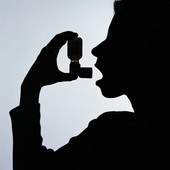
THURSDAY, April 9, 2015 (HealthDay News) — Asthma rates are essentially identical among black children living in Detroit and rural Georgia, researchers report.
The finding challenges the common belief that living in a city boosts the chances of developing the respiratory condition, the study authors said.
Instead, poverty may be what increases asthma risk, the study results suggested.
“The things these children have in common include high rates of poverty, asthma and being black,” corresponding study author Dr. Dennis Ownby, an allergist-immunologist at the Medical College of Georgia, said in a college news release.
In the study, the investigators analyzed data from nearly 7,300 students at six public high schools in Detroit and more than 2,500 students at four schools in rural Georgia. More than 90 percent of the children in Detroit and 60 percent of the children in rural Georgia are black, the researchers said.
About 15 percent of the students in Detroit had diagnosed asthma and another 8 percent had undiagnosed asthma. The rates were nearly 14 percent and 7.5 percent, respectively, among the students in rural Georgia, the study found.
In both locations, about 74 percent of students qualified for free or reduced-cost lunches and the poverty rate was 23 percent, according to the study published online recently in the Journal of Allergy and Clinical Immunology.
Overall, 10 percent of children in the United States have asthma, but the rate among black children is 20 percent, researchers have found.
The study authors said their findings suggest that asthma is a disease of poverty and poor housing, where children are exposed to high levels of asthma triggers such as mold, fungi, cockroaches, mice, dust mites and tobacco smoke.
It’s estimated that 30 percent to 40 percent of asthma risk is genetic and the rest is environmental, the researchers said.
More information
The American Academy of Pediatrics has more about asthma.
Copyright © 2025 HealthDay. All rights reserved.

